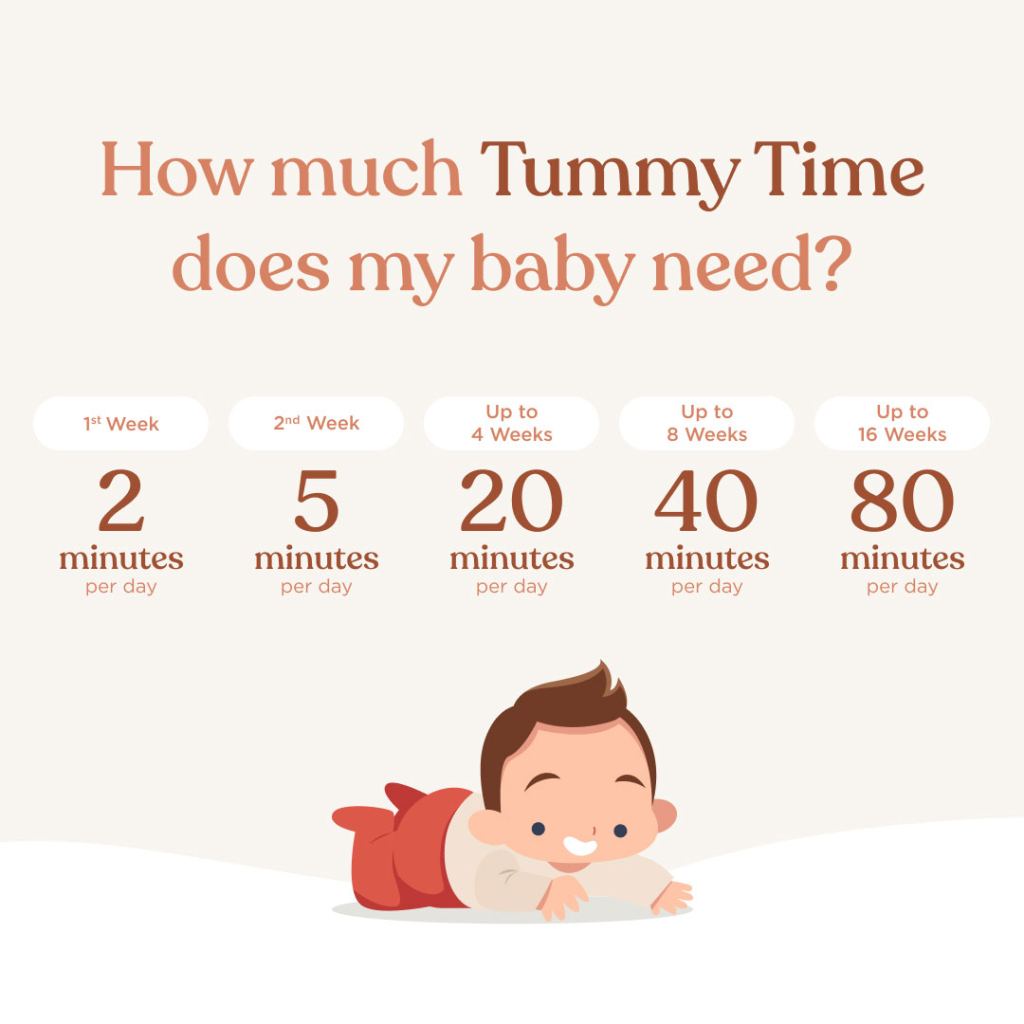
We’re back again with our blog series sharing baby milestones by month. Today is the third installment featuring the 3-month-old baby development steps and milestones. So, what can a baby do after being in this world for a quarter of a year? Our pediatric expert Katrin shares more...
Ready for a little more action? Your baby definitely is. They’re moving beyond the stage of simply adjusting to the world and are starting to explore with curiosity. If they’ve been experiencing gas, that should improve by the end of the third month, as their digestive system continues to develop. Maybe your sleep-wake rhythm is finally settling in? If so, enjoy it—along with the fact that you’re becoming more confident in caring for your newborn.
3-month-old baby development – key milestones to look for:
Symmetrical elbow support during tummy time
Symmetry is the magic word in your 3-month-old’s development. That’s why symmetrical elbow support is a hallmark of this stage. Their palms lie open on the surface and are used for support—not yet for play.
Improved head control
As elbow strength improves, so does head control. While your baby may have only briefly lifted their head during tummy time in the previous stage, now their head is supported by the torso. The more interesting the object they’re looking at, the more their body engages to lift and balance. It’s a great little workout! The best setup? A cozy blanket on the floor and soft, comfy clothes that let them move freely.
By the way, your baby should now be able to rest their head loosely on either side of the playmat. If they consistently rest it only on one side, there might be a slight asymmetry. In that case, check in with your pediatrician.

3-month-old baby milestones in the back-lying position
By the end of the third month, your baby is more stable when lying on their back. Their spine has developed enough that they can lay relatively straight, and their torso is now stable enough to let them move their arms and legs more freely. You’ll see more symmetrical and intentional movements. Thanks to strengthening abdominal muscles, your baby may even stretch both legs upward at the same time—bending their hips and knees to about a 90-degree angle. They love this because it lets them watch their own feet in peace!
Hands and feet open up
That strong grasping reflex is starting to fade. Your baby’s hands will begin to open more, though they can’t yet hold onto toys intentionally. If you place them in a baby bouncer with a play arch or under a mobile, they may bat at it by chance rather than on purpose. Wait until month four, when they’ll be able to see and reach more intentionally.
Their feet also start to “open up” and move more freely. You might notice the soles of their feet coming together or touching gently as they kick—that’s a great sign of increased mobility.
Eyes track toys and faces
Your baby can now bring their hands together in front of their face and then move them to their mouth. This coordination strengthens their hand-eye-mouth skills. They’ll also begin following toys or faces with both their head and eyes, and may hold eye contact for longer. These are the early building blocks of fine motor skills.
3-month-old milestones – when to check in with your pediatrician
Symmetrical elbow support and eye contact are major milestones at this stage. If your baby isn't showing signs of these yet, it’s worth checking in with your pediatrician. Specifically, speak to a healthcare provider if your baby:
- Constantly keeps their hands in fists
- Shows excessive, jerky movements
- Does not lift their legs when lying on their back or frequently crosses them at the ankles
- Does not fixate on faces or make eye contact
- Does not respond to loud noises
- Stiffens or twists excessively during tummy time, or leans on outstretched arms while clenching fists
But don’t stress—most babies reach these milestones in their own time. Every child develops at their own pace, and these guidelines simply help you know what to look out for.
3-month-old baby development – what they can do now!
It’s amazing, isn’t it? In just three months, your baby has adapted so much to life outside the womb. Even if their progress seems subtle, these tiny milestones are huge for them. Want to keep up with their progress? Sign up for our Baby Steps newsletter to get tips tailored to your baby’s age and stage.
And of course, be sure to check back here on the blog for new milestone updates. You can always find this article again by searching “3-month-old baby development” or “baby milestones” on our blog. The next installment is coming soon—because your baby’s journey is unfolding one small, big step at a time.





















